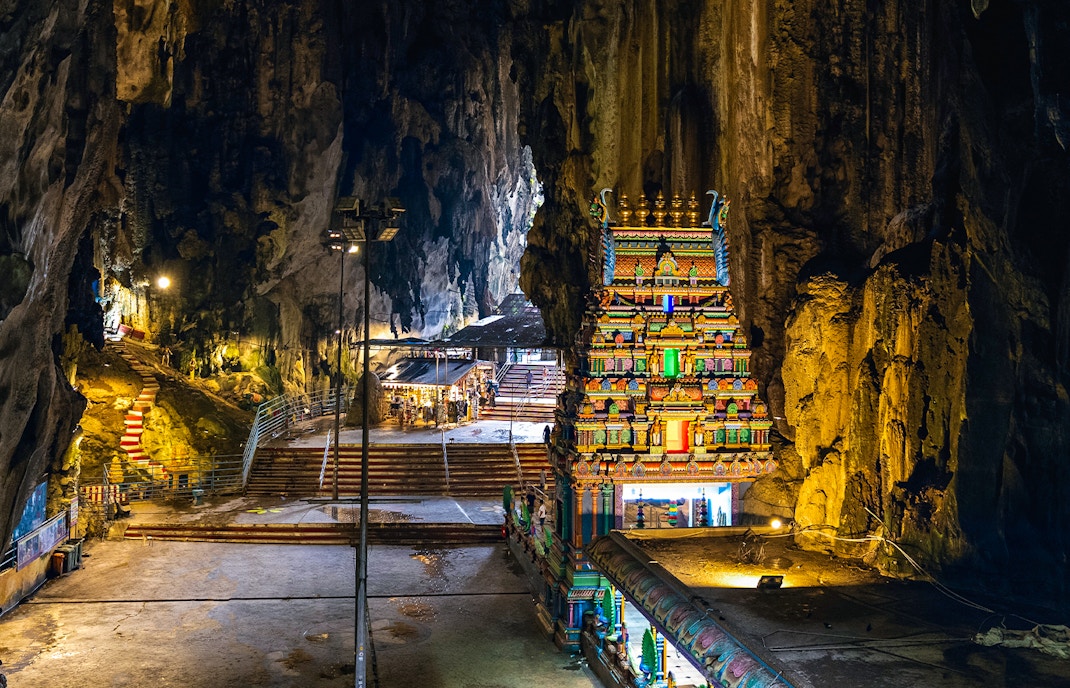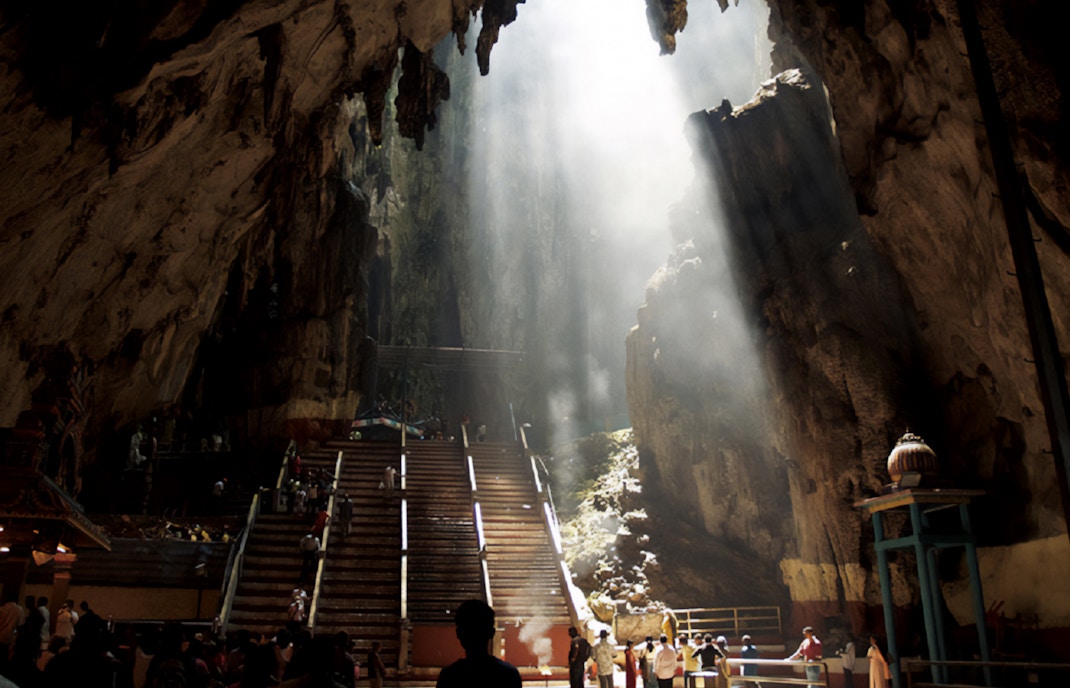Batu Caves is located just 13 km north of Kuala Lumpur, in the district of Gombak, Malaysia. It's a cave complex consisting of over 20 recognized caves. Four stand out as the most prominent and accessible to visitors: Temple Cave, Dark Cave, Cave Villa, and Ramayana Cave. These caves were formed in Silurian limestone dating back over 400 million years, with the caverns themselves estimated to be around 100 million years old. The natural formations include soaring chambers, narrow passages, stalactites, stalagmites, and dramatic skylights where sunlight pours through openings in the roof.





